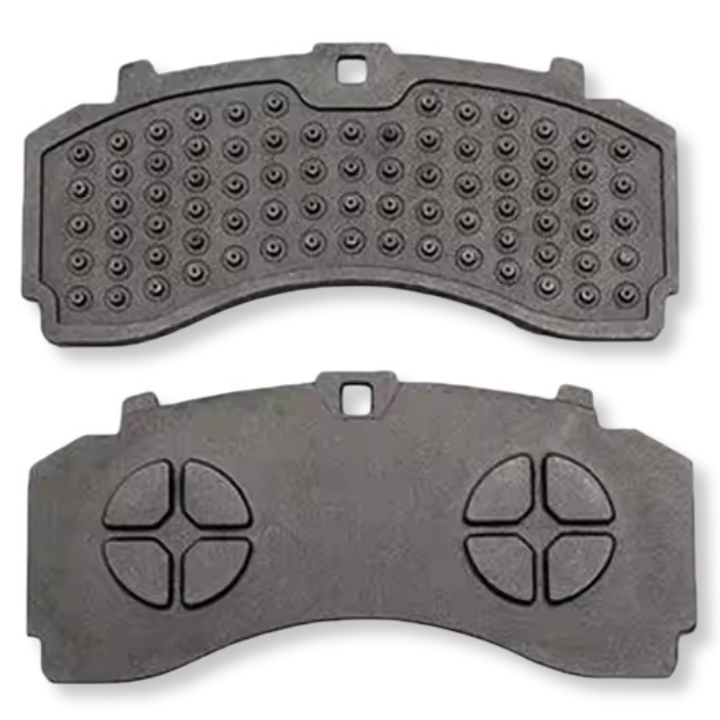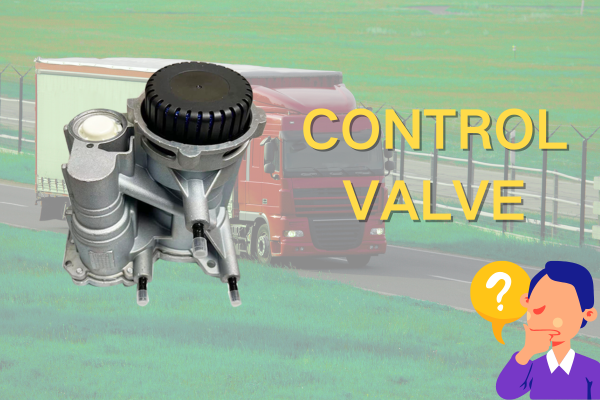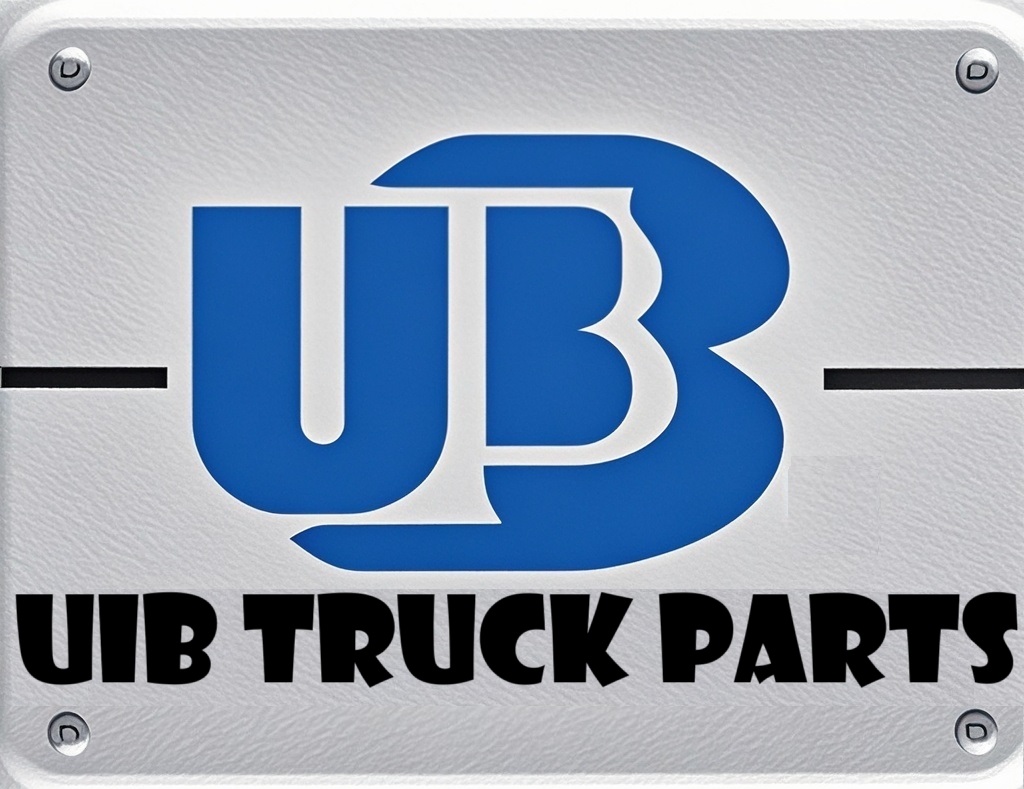About Us
Why Do Truck Brake Pads Fail Frequently? Do You Really Understand Their Key Performance and Maintenance Points?
Views : 152
Update time : 2025-06-23 17:59:47
Brake pads are core components ensuring driving safety in truck transportation, yet many truck owners and maintenance staff often face issues like short service life and unstable performance. This article will walk you through professional knowledge of truck brake pads from materials, performance, types, failure causes, and maintenance aspects.

I. Material Characteristics and Performance Indicators of Truck Brake Pads
(1) Material Characteristics
Mainstream brake pad materials include semi-metallic, ceramic, and low-metallic types. Semi-metallic pads feature good wear resistance and thermal stability, capable of withstanding high braking forces, but with relatively loud noise. Ceramic pads offer low noise, excellent heat dissipation, and minimal wear, suitable for high-speed heavy-duty trucks at a higher cost. Low-metallic pads balance performance and cost. Choose semi-metallic or ceramic pads for mountainous or heavy-duty transport, and low-metallic pads for urban distribution and light-duty transport.
(2) Performance Indicators
- Friction Coefficient: Influences braking distance and stability, typically between 0.35-0.45.
- High-temperature Resistance: Premium pads maintain good braking performance above 600℃.
- Wear Rate: Should be controlled below 0.1mm/1000km.
- Noise & Vibration: Excellent design minimizes noise and vibration.
II. Common Types and Application Scenarios of Truck Brake Pads
(1) Drum Brake Pads
With large braking torque, suitable for heavy-duty and low-speed driving (e.g., engineering trucks, garbage trucks), featuring simple structure, low cost, and easy maintenance.
(2) Disc Brake Pads
The mainstream choice for modern trucks, offering good heat dissipation, fast braking response, high stability, and easy maintenance. They are divided into solid discs and ventilated discs, with the latter having better heat dissipation.
(3) Selection Strategies
- Choose ceramic disc pads for long-distance high-speed transport.
- Opt for semi-metallic drum/disc pads for mountainous heavy-duty transport.
- Select low-metallic disc pads for urban distribution.
III. Common Failure Causes and Prevention Measures of Truck Brake Pads
(1) Failure Causes
- Overheating wear: Prolonged/frequent braking raises temperature, reducing friction coefficient.
- Brake fluid contamination: Impairs friction performance.
- Improper installation: Leads to abnormal wear and unstable performance.
- Material quality issues: Causes premature failure.
- Overloading: Accelerates wear and failure.
(2) Prevention Measures
- Control speed and load; use engine braking on long downhills.
- Regularly inspect and replace brake pads and fluid.
- Choose high-quality brake pads.
- Install and debug according to specifications.
IV. Maintenance and Replacement Tips for Truck Brake Pads
(1) Daily Maintenance
- Clean the braking system.
- Lubricate guide pins and sliding parts.
- Monitor brake pad temperature.
(2) Replacement Timing
- Thickness worn to 2-3mm.
- Abnormal noise during braking.
- Decline in braking performance.
(3) Replacement Notes
- Select original-model brake pads.
- Inspect brake discs and replace if necessary.
- Bleed the braking system to remove air.
Conclusion
Brake pad performance and quality are crucial for driving safety and transportation efficiency. Understanding relevant knowledge and conducting proper maintenance and replacement ensure safer and more reliable braking.
相关新闻
 Revealing Three Little-Known Facts About Trucks
Revealing Three Little-Known Facts About Trucks
Aug 06,2025
This article presents three little-known facts about trucks, including that the cab can be flipped for engine maintenance, the rearview mirrors are equipped with defrosting and deicing functions, and the small tank next to the fuel tank is an urea tank which is crucial for environmental protection. It helps readers understand the secrets behind truck designs and functions.
 Control Valve: The "Key Steward" in Truck Engines
Control Valve: The "Key Steward" in Truck Engines
Aug 05,2025
This article introduces the role of the control valve in the diesel pump, including controlling fuel quantity and stabilizing pressure; lists symptoms when it malfunctions, such as weakened power and increased fuel consumption; provides maintenance methods, and illustrates through cases that paying attention to the control valve can avoid unnecessary expenses.
 Control Valve: The "Invisible Commander" of Truck Power
Control Valve: The "Invisible Commander" of Truck Power
Aug 05,2025
The control valve is an indispensable core regulating component in the truck power system. Although it hides inside the machinery and keeps a low profile, it relies on its powerful functions to precisely command the rhythm of power output, comprehensively ensure driving safety, and intelligently adapt to various working conditions. With sophisticated design techniques and durable material selection, it can achieve a perfect balance between power and efficiency in various complex scenarios, and can be called the invisible cornerstone supporting the efficient and stable operation of trucks.
 Truck Snow Chains: Safety Guarantee on Icy and Snowy Roads
Truck Snow Chains: Safety Guarantee on Icy and Snowy Roads
Jul 28,2025
This article elaborates on truck snow chains, including their important role on icy and snowy roads, applicable scenarios, selection methods, installation steps, and usage precautions. It aims to provide references for truck drivers to drive safely in icy and snowy weather and reduce accidents caused by slippery roads.
